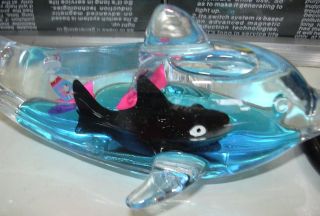 ,
,
Two liquids
The waves disturbing the balance of stagnant water surface, which are formed following the impact of some outside forces, have somehow double character:
1. Gravitational, for waves created on water surface by gravitational forces, the velocity v of l wavelength wave propagation can be calculated from the following formula:
 , , |
(1) |
where g is the gravitational acceleration..
2)Capillary one, in which surface tension forces ss perform a significant function. For such waves their velocity is described by the following equation:
 , , |
(2) |
in which r stands for the density of liquid.
JW Player goes here
|
JW Player goes here
|
Generally the velocity of capillary-gravitational waves propagation is described by this equation:
 . . |
(3) |
However, this is not everything, on the boundary between two liquids, which do not mix and which have different density, waves are also formed, as the film shows. To describe the velocity of their propagation we can employ the 3rd equation, with a slight modification concerning the differences in density:
 . . |
(4) |

The above analysis have been plotted on the graph showing the relation between propagation of velocity of waves and their length for gravitational waves (green line),
for capillary waves (blue line), for capillary-gravitational waves (red line) and on the boundary between two liquids: oil-water (yellow line). As the graph shows, within short waves, the band capillary waves perform the main role, within long waves band - the main role is performed by gravitational waves. The waves within 0.1 do 10 cm band are of a mixed character.
The very slow rise and small absolute values of the yellow graphs for oil-water liquid explains why pouring oil on the wavy surface of the sea water calms it.